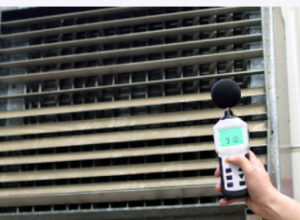Understanding Your Noise Meter Needs
The noise meter is a measuring device or tool used to measure noise levels by measuring sound pressure directly. Noise meter, also called an acoustic noise dosimeter, is commonly referred to as an acoustic noise level (ADL) meter, a microphone meter, or a decibel meter. A noise meter is used in many different applications, such as measuring ambient air quality, monitoring industrial performance, and extensively used in laboratories. Other uses include marine and aviation applications, industrial testing, telecommunication, high fidelity audio systems, home electronics and industrial automation. It measures the amount of noise generated by sources at various frequencies and levels.
 There are two types of noise meters. One is the Stand-alone noise meter, a portable device, and the other is the rack-mounted noise meter. Both provide good measurements of noise levels. However, for the application to be defined, the device should have the required measurements. There are noise measurement devices that rely on an external source of measurement, and these depend on the device’s power supply. The measurements are carried out when the device is placed in an environment with known noise levels.
There are two types of noise meters. One is the Stand-alone noise meter, a portable device, and the other is the rack-mounted noise meter. Both provide good measurements of noise levels. However, for the application to be defined, the device should have the required measurements. There are noise measurement devices that rely on an external source of measurement, and these depend on the device’s power supply. The measurements are carried out when the device is placed in an environment with known noise levels.
The Stand-alone noise meter has been designed and built specifically with wireless networking equipment such as wireless routers. The transmitter is then placed at an appropriate distance from the receiver, which allows the measurement of noise levels without any interference from other wireless devices. In addition, it is capable of measuring sound levels at different noise sources and distances. Therefore, this is a suitable type of noise meter to use when measuring sound levels at a specific distance.
In situations such as automobile driving, it is vital to have reliable means of measuring the noise levels inside the vehicle. Car audio systems produce sounds that travel through the windshield and the speaker cones within the speaker enclosure. If the noise level is measured while these cones are positioned in a room or car, it is not easy to determine the actual noise level. It is one reason why some automobile manufacturers include built-in noise meters.
You can also use a wireless noise meter if you want to measure the sound level without setting up the wireless microphone. All you need to do is place the microphone at an appropriate distance from the target and use the transmitter to send the measurements over a wire or radio signal. You will receive the results through the receiver. This type of measurement is suitable for measurements of long distances in the hearing loss field. The distance between the transmitter and the receiver must be longer to have more variations in the received signal.
Another popular device is called the multimeter, and this is ideal for people who work in a production environment. The device has a pair of transducers, which are used to measure sound levels. You can purchase this device, along with a belt clip, to attach to your belt. The multimeter is a reliable device since it has more than ninety-five per cent accuracy. It uses digital technology to determine the pressure of the sound being measured.
A third popular noise meter is called the cuff sleeve, and it is a flexible sleeve with electronic circuits built into it. The device usually has a probe put inside the device and measures the sound levels as the user moves his hands around the device. The cuff provides a constant reference source for the measurement, and it works by measuring the variation in pressure between the probe and the part.